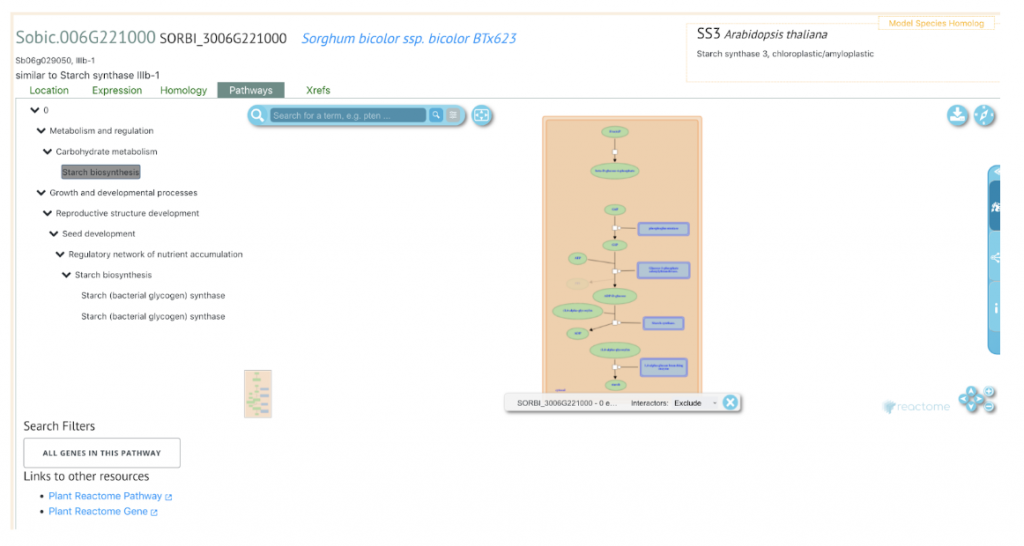Glutinous and Japonica Sorghum Analyzed for Gene Expression and Gene Regulatory Pathways Related to Starch Synthesis
Sorghum is a superior material for making white wines such as the Chinese wines Moutai and Wuliangye and the seeds’ starch content greatly influences the brewing quality. The amylopectin content in the seeds of a Sorghum plant is closely related to yield when sorghum is used in wine-making. Both glutinous and japonica (non-glutinous) seeds can be used to make wine. However, glutinous seeds are not only rich in amylopectin, but have higher starch digestibility and ethanol conversion. Understanding starch synthesis in sorghum is of great interest to scientists, breeders, and those involved in wine-making.
Sorghum researchers from Liaoning Academy of Agricultural Sciences, Shenyang, China, compared two varieties of sorghum, Liaonian3 (glutinous) and Liaoza10 (japonica), to analyze differences in gene expression affecting starch synthesis. Both varieties showed an increase followed by a decrease in starch accumulation, with higher amylopectin content in Liaonian3, but higher amylose content and total starch content in Liaoza10. Transcriptomic data from the Liaonian3 and Liaoza10 were analyzed on days 3, 18 and 30 post-pollination and indicated that the starch synthesis and sugar metabolism related genes for both varieties were most active on day 3 (end of pollination) and decreased in the following days. This demonstrates that starch synthesis is a complex process involving several enzymes and environmental influences and the reason for the pattern is still unclear. Othologous gene alignment and expression analysis revealed that 19 genes were key for starch synthesis and glutinous and non-glutinous differentiation. For example, the researchers used rice QTLs related to starch accumulation to identify sorghum orthologs. One ortholog of OsSSIIIa, entrzID_8066807, only showed a difference in expression between Liaonian3 and Liaoza10, 30 days after pollination leading the scientists to conclude that it may be an important gene for amylose synthesis, resulting in late stage influence on amylose content in the seeds. The expression of the gene entrzID_110430978, orthologous to OsSSI, was less straight forward resulting in a significantly higher expression level on day 18 post-pollination in Liaonian3, but on day 30 the expression was significantly higher in Liaoza10. The authors hypothesize that the gene serves to regulate the structure of amylopectin in sorghum, and that this begins at the mid-point in the formation of the seed.
SorghumBase Example

Reference
Ke F, Zhang K, Li Z, Wang J, Zhang F, Wu H, Zhang Z, Lu F, Wang Y, Duan Y, Liu Z, Zou J, Zhu K. Transcriptomic analysis of starch accumulation patterns in different glutinous sorghum seeds. Sci Rep. 2022 Jul 1;12(1):11133. PMID: 35778525. DOI: 10.1038/s41598-022-15394-1. Read more

